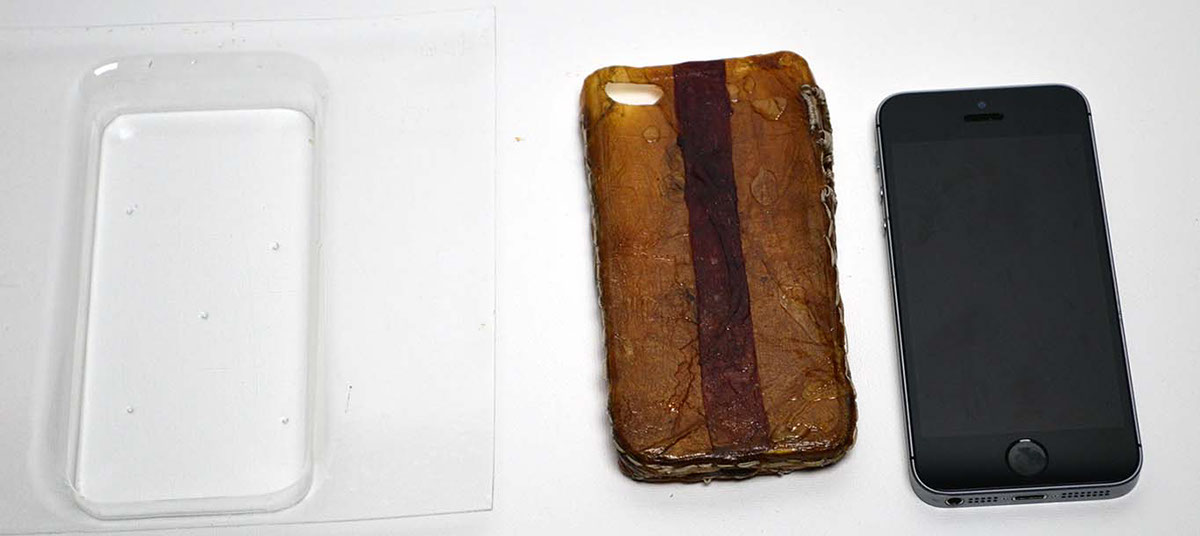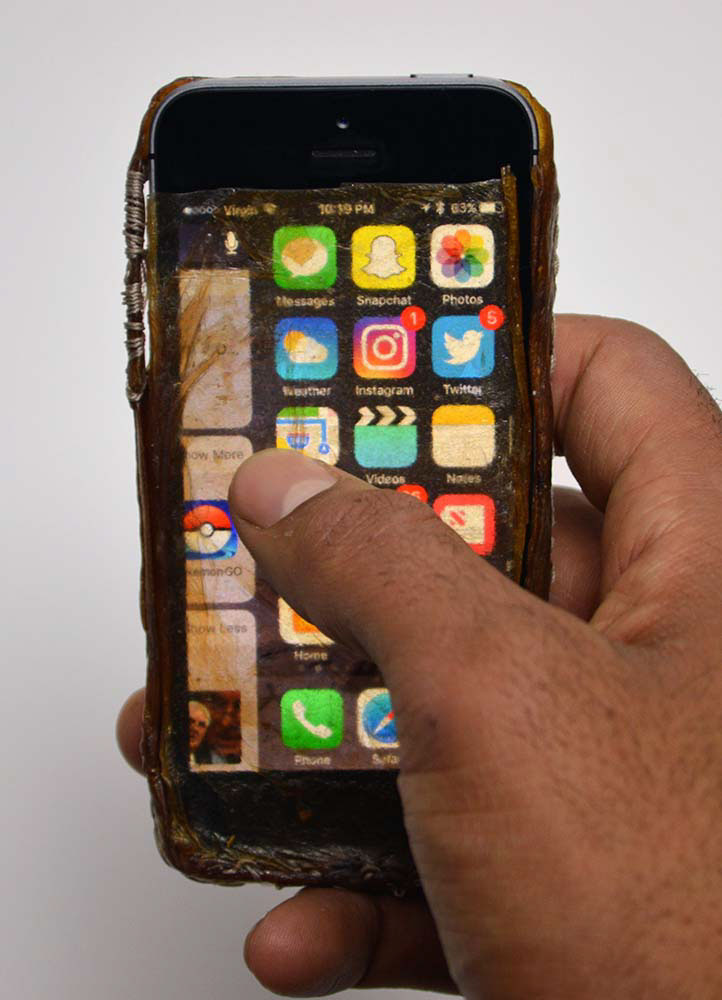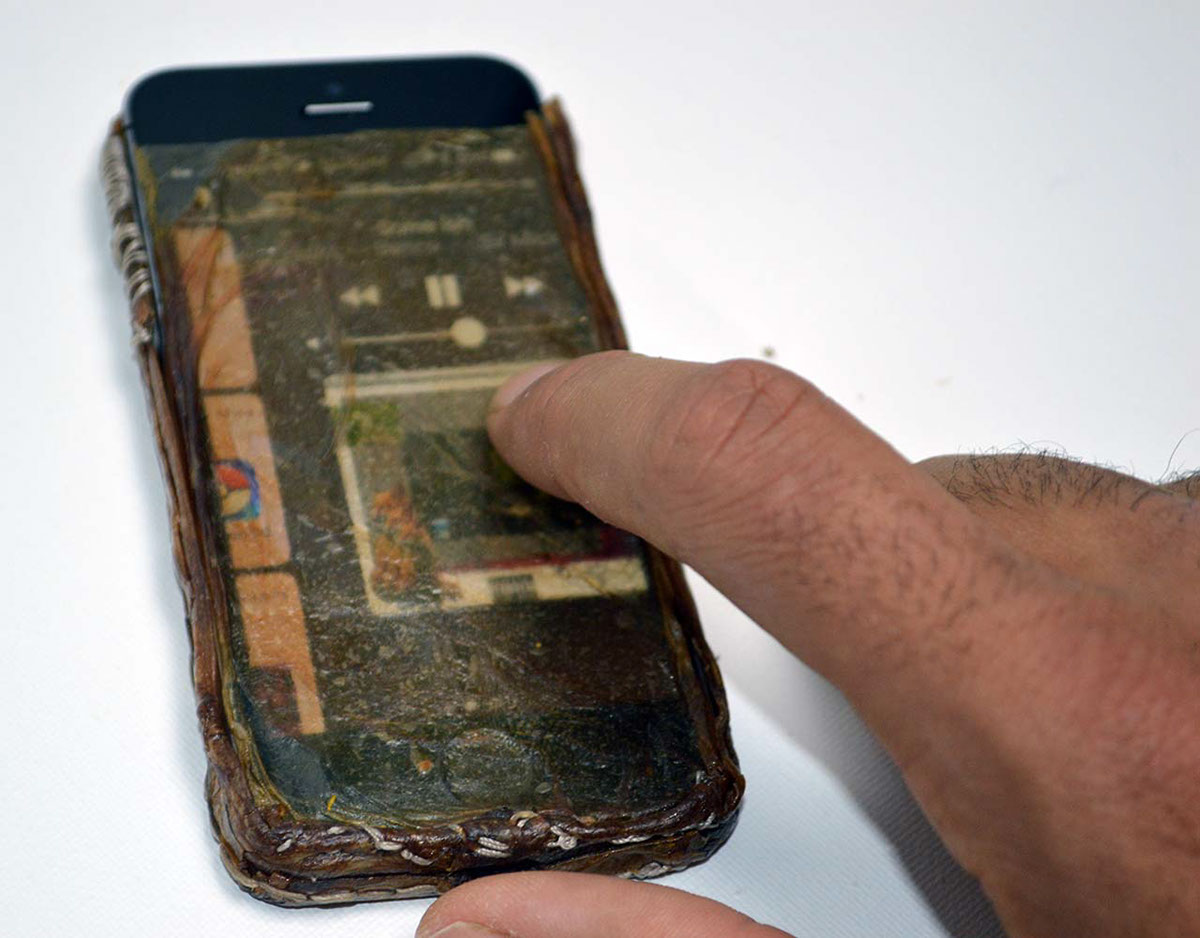In 2015 the mobile phone accessories brought in a revenue of 81.5 billion dollars with cellular protective cases at the top of this quickly growing industry. With new phones coming out each year these cases become obsolete and create excess waste. This project explores the use of bacterial cellulose as an experimental material for cellphone cases. This material is ecologically friendly and can be grown with minimal resources.

Bacterial cellulose can be grown in a sugar vinegar water solution with a starting culture or also known as SCOBY (Symbiotic Culture of Bacteria and Yeast). Experimentation on the material such as dying with natural dyes like beet juice. Using water as an activator for additive methods for building up dried cellulose. Inflating the cellulose with air and sealing with wet cellulose. Performing stress tests and water proofing with various waxes and shellac.

By creating a form for the cellulose to grow in a phone case can be made from 2 sheets of cellulose.

By stitching the cellulose together with needle and thread allowed for the creation of a slip in case with a protective screen cover.


The hydrophilic properties allows for accurate touch capabilities through the screen cover.


